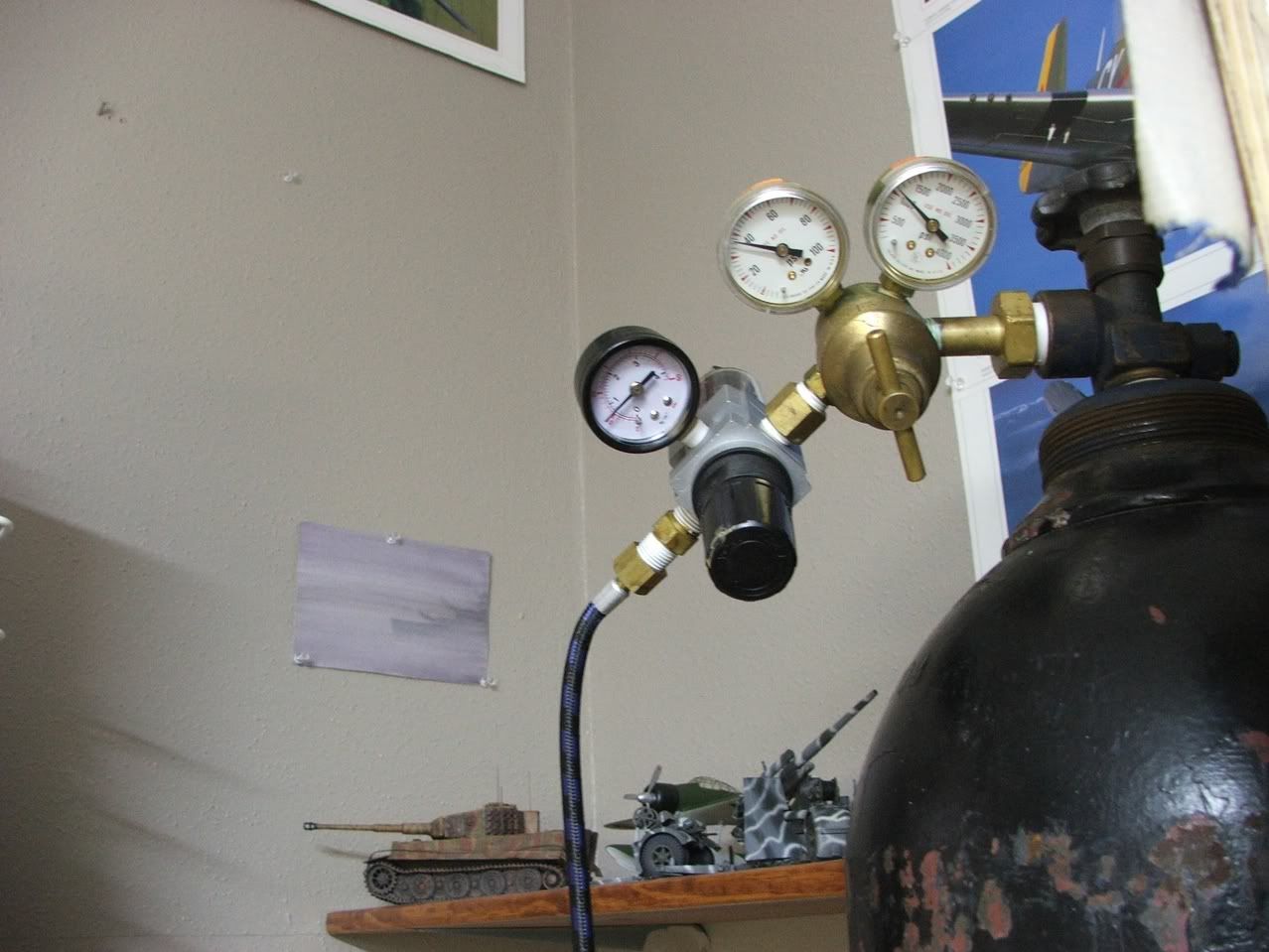- Member since
November 2005
|
Posted by Anonymous
on Saturday, October 8, 2005 5:16 PM
Everything Scott said is VERY true, be sure and read your manual on your a/c b4 buying a regulator, I am assuming u have an electric A/C, I don't know anything 'bout those but I do sorta understand the regulators, I am sure you would get by very well with the type of regulator I have attached to mine on the far left, It is a regulator with a moisture trap, which u will probably need since you are using co2, or plain ol' air, I am using nitrogen, which is dry but I needed the extra regulator cause the main regulator doesn't have finely tuned needles in it to give me like 1psi, the only one I was able to find was one with a m/t so... So you are running air straight from the a/c? go to a GOOD art supply store and they should have a regulator w/m/t, or maybe your LHS (~shiver~, at the cost) I live in Houston, which is a kinda big town, and the only place I was able to find one was at a really good art supply store. Be sure and have the brand of ur a/c handy to get the right size fittings and get some teflon tape,u can see mine on the threads. And another tip I got was get a spray bottle of water mixed with ammonia (what I use) to spray on the fittings and hose to make sure u do not have any leaks!! If u do it will bubble up at the leak, that has saved me alot of money!
The cost of the regulator w/mt (mine) was $70 bucks.
Sry to butt in here, and if my information is useless just pretend I wasn't here.
Umm...the dial on the far right tells the amount of psi leaving the tank/entering the regulator, the one in the center tell amount "leaving" the reg., the far left one with the moisture trap tells me the amount going to my A/B, just FYI.
Also see the post "moisture when airbrushing" and see what Scott has to say, there is no one who knows more.
Be good & have Fun,
Bill

|